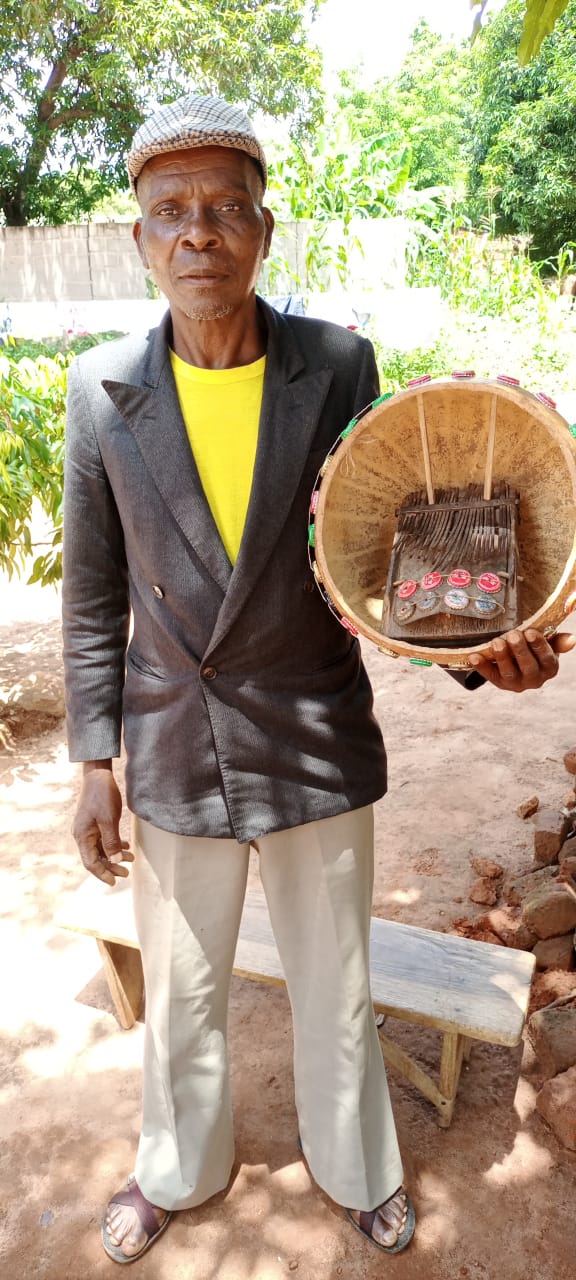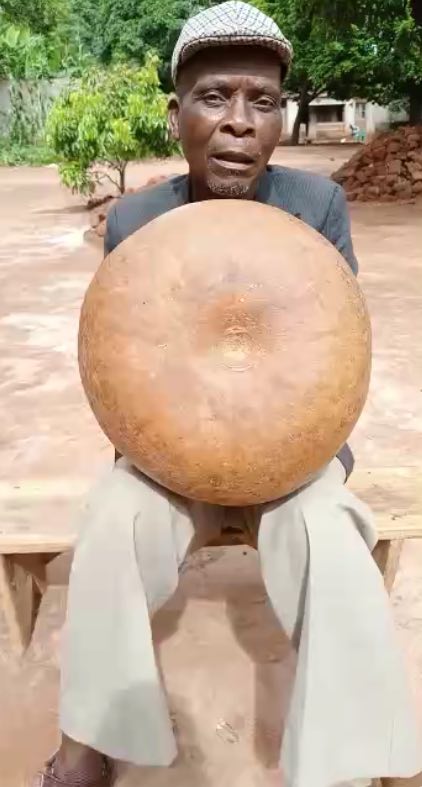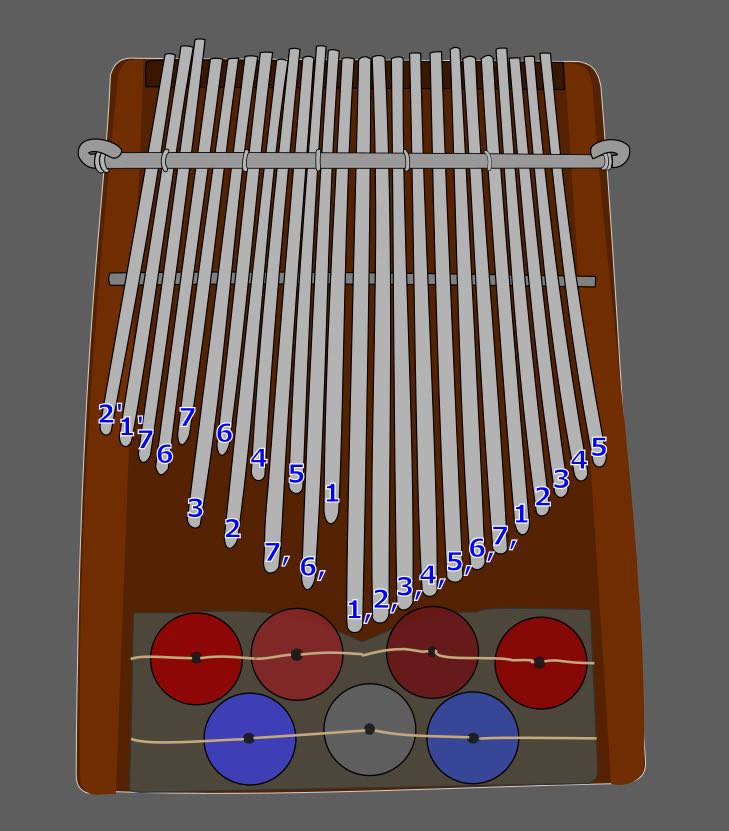Please contribute to our
fundraiser
».
Thank you if you already have!
Augusto Manejo Chatsama (Sekuru Fala comigo)
Nyonganyonga maker & player Phone: +25 88 712 442019 (no Whatsapp)Place of residence: Catandica, Barwe district, Manica province
Musical biography
Augusto Manejo Chatsama, also known as "Fala comigo" (a nickname derived from one of his songs) was born in 1950. He belongs to the Barwe ethnic group, like his parents who are also from Catandica. His totem is Macate/Mukanya (baboon). Sr. Manejo plays and builds the nyonganyonga type of kalimba (also called malimba), a Mozambican relative of the matepe. It is played as both a solo instrument and in an ensemble. He began learning the instrument in 1965, captivated by its beautiful sound after hearing his brother-in-law playing it to win over his sister's heart for marriage. His teacher was Sekuru Feniasse. The players who impressed his most were Feniasse and Sekuru Salha. He doesn't know the origins of his type of kalimba. Manejo has more than 20 songs in his repertoire. His favorite song is called Rewa tibve fala sweet. He composes for himself, and the lyrics are his as well. Besides for entertainment, he plays for many occasions and ceremonies, such as Bona, Bira, Kutira mizimu etc. He considers the most important skills of a kalimba player as being able to bring out a good sound that makes people happy, and to play and sing in harmony.During Civil War
Manejo explains how the civil war had a severe impact on the popularity and availability of all kinds of kalimba music. People couldn't gather and enjoy it as they used to. Numerous musicians and skilled makers lost their lives, and many instruments were lost, too. Manejo had to keep his instrument with him wherever he went, but didn't play it for an extended period. Later, when he had to join the church [due to family pressure], he faced criticism, causing a decline in his motivation to play his kalimba.Ndaperederi pezi baba ~ People have lost respect for me, father
Rewa rewa tibve fala sweet ~ Please say something sweet
Jesu mwana vaDavide ndinimunamata tani ~ How can I adore Jesus son of David?
Instrument building
Taught by Sekuru Feniasse, Augusto Manejo started making kalimba in 1958. In his opinion, an instrument's most crucial attributes are its ability to produce the sound the player wants and the quality of construction that ensures longevity. He tunes his instruments by ear, and employs three different tunings which he calls Kasawa tuning, Nketure tuning, and Magunte tuning (Kasawa ~ advice, Nketure ~ profound happiness, Magunte ~ elder). All three tunings can be played together; you can play the same scale in any of the three, starting a few keys down or up. This means they are essentially different modes of the same scale. A "good" tuning is characterized by the ability to complement with Magunte tuning which is the main one. Manejo has built more than 15 instruments: Mostly nyonganyonga, and one of another type of kalimba called Ntchanje yatsviru.Ntchanje yatsviru
Literally "the jealousy of a mad person", Augusto Manejo explains how this kalimba's repertoire predominantly consists of songs which deal with the topic of love, with lyrics and sounds so deep that they [the ancestors] concluded that it were expressions of madness induced by intense love and jealousy. Manejos says that this type of kalimba is quite similar to the Mana yembudzi, but it has two bass keys. Like the nyonganyonga, it is played with four fingers, its bass keys are played with the left thumb.Manejo's nyonganyonga
Here is a virtual version of Sekuru Manejo's instrument in Nketure tuning. Listen »Instrument information »
Nyonganyonga tuning pt.1
Nyonganyonga tuning pt.2
Local music culture
These are other players Manejo knows in his area, and their types of kalimba:- Sr. Feniasse in Caia (nyonganyonga and kasawa)
- Sr. Salha (son of his teacher) and Daniel Quetani in Serra Choa (nyonganyonga)
- Avó Rekani Dzvanu in Sena (nyonganyonga and ntchanje yatsviru)
- Senhor Zuze in Gorongosa (mana embudzi)
- Pai Choka in Makumbura (ntchanje yatsviru)
- Sekuru Manyenga in Catandica, Bairo Mugabe (nyonganyonga)
- Kasawa ("advice"; similar to, but not same as mana embudzi)
- Ntchanje yatsviru
- Nyonganyonga
- Kalimba nkulu
- Kalimba mudoko
- Matepe, Hera
Preserving Kalimba culture
In response to Cangola's questions about the future and preservation of his music, Sr. Manejo says that"Kalimba may not survive for much longer, if the current generation cannot appreciate and embrace it music as our cultural heritage. Many young people today consider this type of music to be out of fashion, and the invasion of Western music styles, produced in computers makes our own heritage fall into oblivion. So we need to go back, stand up for, and take pride in our culture, teach the young people how to play, when to play, and why to play, and making [instruments] as well. But this requires a serious passion for our culture. If you [Tatenda] manage to involve others, we can save our cultural heritage. Our culture has gone, so you need to work hard to succeed in this. I am an old man, and I didn't go to school. I would join you, but unfortunately I am waiting for my days. As no one is coming in my footsteps, I would like to encourage you in your work by saying that you must be very disciplined, because what you are doing is spiritual, therefore you are not alone but our ancestors will be with you. I can help you build instruments and teach you if I am free, I am so happy that you are doing this work. I even dreamt about this yesterday. I didn't know you were the one bringing me this good news. Be strong 'filho' [son]. May you be guided by the ancestors, who are the source of our traditional knowledge and owners of the instruments. It is possible to rescue this beautiful culture."
First nyonganyonga video on the internet
Sekuru Manejo says that about a decade ago, he worked with a man from France who came together with Célio [Vilanculos], and wanted him to perform in France with late Sekuru João Nyamabangwe. Unfortunately it didn't happen due to lack of passports. However, some other musicians went to France, but the one Manejo calls the "master" is no longer alive. Célio published a video on Youtube, which had long been the only known video of a nyonganyonga on the internet. Another video of theirs was later released by the Mbira Centre.Augusto Manejo playing Magodagoda (not 'Mapadza')
This nyonganyonga is in Kasawa tuning. He built in 1975, a period when he made many instruments.
Kuoma moyo kwanyakwawa ~ The hardened heart of the leader (Chief who sells the bush, so where are people going to get their farms?)



